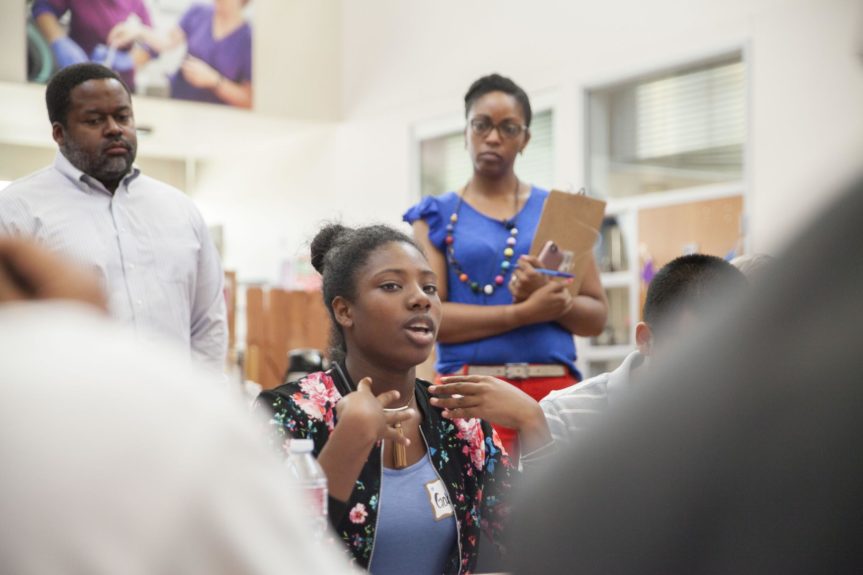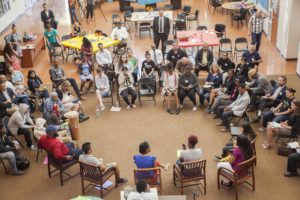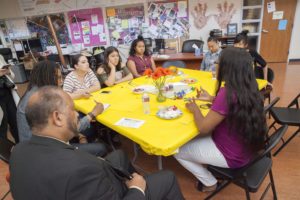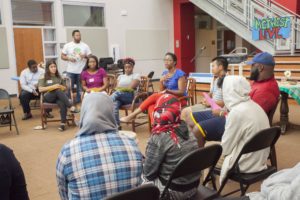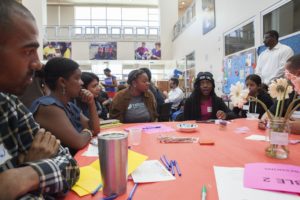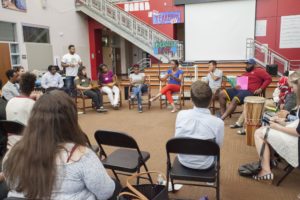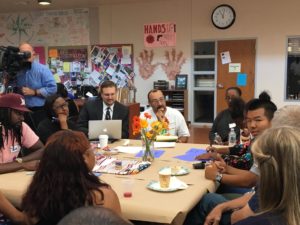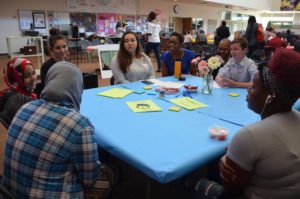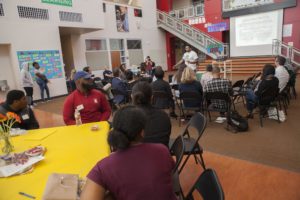An amazing dialogue took place at MetWest last week. It was amazing for two reasons. First our young people are awesome, and second, the youth did most of the speaking. Even though there were many dignitaries and officials in the crowd, including our newly contracted superintendent, Dr. Kyla Johnson-Trammell (woot woot)—the adults largely yielded the floor.
This was the youth’s time, to hold us accountable on our promises, comparing their experiences to our promises and rhetoric.
They had a lot to say, some good, some bad, all honest, and deeply inspiring.
But I still worry about some silences.
Are you ready for the world?
30 or so Oakland seniors and recent graduates answered that question for us. Did they have the academic and social preparation for success in college career and beyond, what worked, what didn’t, and how did they feel? It was deep. You can see some video from KPIX here or a report from the Chronicle here.
The youth talked, and the adults listened—and again, it was a great Oakland cross section, the new superintendent, a board member, principals, teachers, key district staff, funders, community organizations, parents and community.
Anyone who heard the young people would know more about Oakland’s schools, the successes and challenges than someone who watched every minute of every school board meeting.
The best parts of school are outside the formal curriculum and “engagement is joy”
This event wasn’t about posturing, or scoring political points, it was about experience. The lived experiences of young people from all backgrounds, the amazing inspiring teachers they had, and those that put them to sleep. The real world engagements and youth leadership experiences that made them feel empowered and also the classes they thought irrelevant.
But much of what they cherished about school did not happen in the regular classrooms, it happened outside the school walls and traditional classes: at hack a thons, through travel, from sports and arts engagement, maker fairs and creative activities where they are put in charge of the work, finding joy in creative hands on engaging work with teachers and other adults who cared. And cared enough to make the content engaging and relevant.
On the flipside the youth know the challenges. Classes that put normally engaged students to sleep, with teachers who don’t seem to care, or notice when students slip out after attendance, and a curriculum that doesn’t adjust to different learners. Middle school was described as “forced feeding.” And students struggled with the relevance of much of the material. At the same time they wanted classes on those things that seemed most relevant. And also more diverse school staff who could relate to them and understand their experiences.
The curriculum they need
In my group, at least, there was a universal call for a life skills class, both from current students and recent graduates in college. Students needed to actually have a curriculum around conflict resolution, financial literacy, dealing with stress and trauma, working together, help with the real world challenges of growing healthily in a stressful environment, and also just those practical skills of understanding how to manage money, create a resume, do taxes, apply for aid etc. For a host of reasons, many students don’t get all these skills from home, and schools should be more explicit about making them part of the curriculum.
And if the curriculum is not relevant or doesn’t meet the real needs of students, what is it?
The approach we need
Dr. Johnson-Trammell began her reflection time with one of those ageless Grandma sayings, “we are born with two ears and one mouth for a reason.” We do well to heed the wisdom of the ages, and many of our answers are right in front of us if we pay attention.
The youth are inspirational. In this drumbeat of depressing news, hearing from them is an anti-depressant. There were some incredible stories of student empowerment and the successes our youth have worked for, and the challenges they have overcome. I had a Yale student from Mack and a Notre Dame students from O-High (I think), as well as students fighting to make the schools better and more equitable places, and having a real impact.
And we will be presenting some of those stories in coming blogs, alongside hosting additional youth –centered forums.
The students that didn’t speak
But amidst the learning, connections, and inspiration, I know that most of the students I met were experiencing success in our schools, in one way or another. And I wonder about the silent many.
The students who were not there, who were not engaged, who didn’t feel confident to raise their voice, who may not be in school any more.
In the presence of such powerful young people, I feel the absence of those who should be there but aren’t, who could be there, but didn’t have the support or opportunities, and the strength of our successes shows me how far we have to go to spread that to more young people.
Even with that, it was a good day, and I hope we have many more to come.
As long as school is done to students and not done with and for them, results won’t change. This forum was a good first step and I appreciate the students, superintendent, and everyone else who made this first step possible. If we listen to the youth and let them lead, I know we will go in the right direction.
Thanks to Sophia Sobko for the photography
ADDITIONAL IMAGES:

